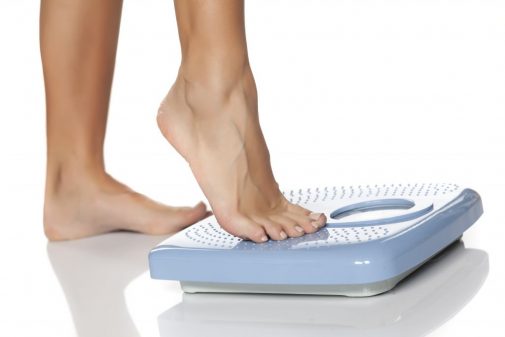Consider these weight loss tips to help prevent osteoarthritis

After a certain age, most of us struggle to maintain an ideal body weight. Sedentary work and life commitments combine with an age-related downward shift in metabolism to make all the old tricks for weight loss obsolete.
As a total joint specialist, I see the serious health consequences of obesity in a significant number of my patients suffering from painful and disabling osteoarthritis of the hip and knee.
 Osteoarthritis of the hips and knees is influenced by several factors – most significantly by genetics, lifestyle and weight. Some individuals have a genetic predisposition to early osteoarthritis, which is a wearing of the smooth cartilaginous surface at the end of the bones.
Osteoarthritis of the hips and knees is influenced by several factors – most significantly by genetics, lifestyle and weight. Some individuals have a genetic predisposition to early osteoarthritis, which is a wearing of the smooth cartilaginous surface at the end of the bones.
Cartilage is designed to protect the bony surfaces of the joint and to facilitate smooth, effortless range of motion. Wear of the cartilage from osteoarthritis produces a condition where the cartilage surface becomes worn and “gritty,” and the underlying bone is exposed. Now you have bone rubbing against bone, causing friction that limits range of motion, and painful weight bearing is the result.
Lifestyle is another important factor in development of osteoarthritis. Individuals who have demanding, physical jobs and those who engage in high impact or other pounding activities sometimes accelerate wearing of articular cartilage. Progression can often be delayed by switching to lower impact exercises such as swimming, biking or walking. Cross training can be helpful to avoid repetitive, damaging jarring of the joints.
It’s no secret that Americans struggle with obesity. While I’m not advocating that we adhere to supermodel weight goals, maintaining a close to ideal body weight can help to prevent arthritis and extend the life of already arthritic joints. There is a tremendous force transmitted through the weight-bearing joints in each step we take.
This is compounded by high-impact activities like running or jumping. The extra weight and force exerted on the joints is damaging to cartilage surfaces. One research study showed that for every pound lost, it takes 3-4 pounds in force off of the knee and 6-7 pounds in force off of the hip. That’s a great return!
In addition, I remind patients that obesity makes eventual total joint replacement more difficult, as the anatomy and access to the joint is obscured by a thick layer of fat.
So what’s the best way to lose weight?
I tell my patients that 75 percent of weight loss is from diet. Exercise is important in keeping you fit and good for your overall health status, but far and away, maintaining a healthy, balanced diet is the most effective way of reducing weight. With the hundreds of different types of diets out there, it can be overwhelming to find the right one. If you are having trouble losing weight or want a more structured approach to weight loss, I recommend meeting with a dietitian or nutritionist.
If you’re having difficulty getting started, consider the following:
- Move – Any type of activity burns calories, so work on taking stairs whenever possible. Osteoarthritis becomes a vicious cycle, as patients are reluctant to move due to pain. They in turn gain more weight from inactivity and lose flexibility in their joints. Work on increasing the number of steps taken each day and performing simple range of motion exercises.
- Consider a nutritionist/dietitian – Many insurance plans will cover a consultation with a nutritionist/dietitian to develop a healthier diet.
- See an orthopedist early – Don’t let joint pain take control of your life. Seek help from medications or injections to decrease arthritic pain, making movement and a healthier lifestyle easier.
- Work with a physical therapist/personal trainer – Orthopedic surgeons frequently work with physical therapists and prescribe exercises designed to increase range of motion and to strengthen the important muscles that help move the joint. Therapists can help you learn how to correctly exercise and which exercises to avoid. Working with a personal trainer can also help with strengthening and flexibility at your own gym. If you aren’t a member of a gym, consider joining the Healthy Transitions Program at the Centre Club. This is a program that I helped design for my patients struggling with arthritis. It includes a one-on-one fitness consultation and assessment, access to group workout sessions and development of an individualized exercise program.
As an orthopedic total joint specialist, I love to operate, but no surgical intervention – regardless of the surgeon’s skill – is ever as good as a natural joint. I work hard to make sure my patients understand the factors contributing to their painful, arthritic joints, and I do what I can to ensure that they have access to services that will keep them fit and healthy and that will extend the life of their joints.
So, in the early weeks of fall, take advantage of some of the Midwest’s best weather and stay active. Use it or lose it…get moving to stay moving.
Dr. Junaid Makda is a board-certified total joint specialist with Advocate Medical Group Orthopedics at Advocate Condell Medical Center. His specialty is total joint replacement, including anterior hip replacement, partial knee replacement and minimally invasive surgery. Dr. Makda is currently seeing patients in the Lincolnshire (100 Village Green Drive) and Libertyville (825 South Milwaukee Avenue) offices. He is accepting new patients – Call (847) 634-1766 to schedule.
Related Posts
Comments
About the Author
Dr. Junaid Makda is a board-certified total joint specialist with Advocate Medical Group Orthopedics at Advocate Condell Medical Center. His specialty is total joint replacement, including anterior hip replacement, partial knee replacement and minimally invasive surgery. Dr. Makda is currently seeing patients in the Crystal Lake (525 Congress Pkwy, Suite 350) Lincolnshire (100 Village Green Drive) and Libertyville (825 South Milwaukee Avenue) offices. He is accepting new patients – Call (847) 634-1766 to schedule.
















